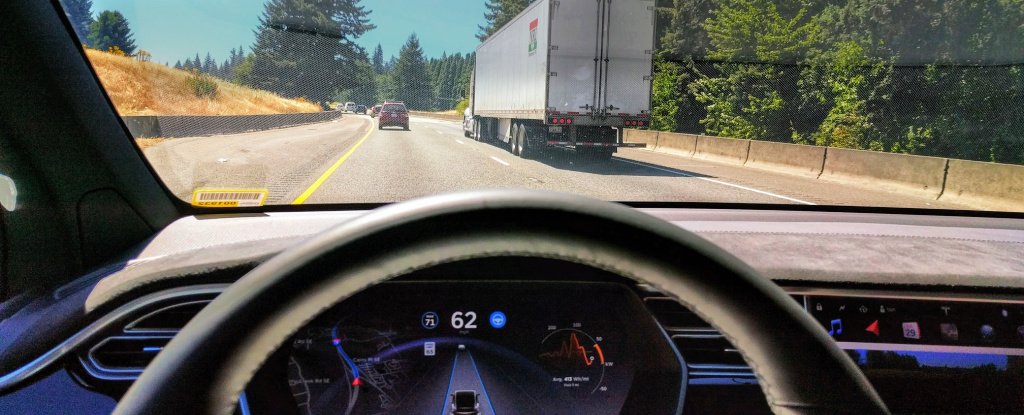Products You May Like
It’s something that has long been suspected. Now, we have evidence from a new study – once the Autopilot self-driving tech is enabled on Tesla cars, human drivers tend to pay less attention to what’s happening on the road.
The study highlights the awkward in-between phase that we’re now in: Self-driving tech has become good enough to handle many aspects of staying on the road, but can’t be relied upon to take over everything, all of the time.
That is potentially more dangerous than both fully human driving and fully automated driving, because when people get behind the wheel they assume they don’t have to give their full attention to every part of the driving experience – as this study shows.
“Visual behavior patterns change before and after Autopilot disengagement,” write the researchers in their published paper. “Before disengagement, drivers looked less on road and focused more on non-driving related areas compared to after the transition to manual driving.”
“The higher proportion of off-road glances before disengagement to manual driving were not compensated by longer glances ahead.”
As capable as it is, at the moment Autopilot is unable to drive a car on its own in every scenario. Tesla itself says that Autopilot is “designed to assist you with the most burdensome parts of driving” and that its features still “require active driver supervision and do not make the vehicle autonomous”.
As part of an ongoing study on driving and advanced technology, researchers from Massachusetts Institute of Technology (MIT) analyzed driver posture and face position to determine where their eyes were focussed. Using data collected since 2016, the team compared 290 incidences of drivers switching off the Autopilot feature, comparing their behavior before the disengagement with their actions after.
Data across almost 500,000 miles (over 800,000 kilometers) of travel was used for the study.
Of the off-road glances observed while Autopilot was enabled, most were focussed on the large screen at the center of the dashboard in every Tesla automobile. The researchers found that 22 percent of these glances exceeded two seconds with Autopilot switched on, compared with only 4 percent with Autopilot off.
Off-road glances were longer on average while Autopilot was engaged. During manual driving, glances to side windows, the side mirrors, and the rearview mirror were all more likely. The researchers also developed a simulation model to estimate glance behavior across a wider set of data.
“This change in behavior could be caused by a misunderstanding of what the system can do and its limitations, which is reinforced when automation performs relatively well,” write the MIT researchers.
The team suggests that autonomous systems such as Autopilot should be watching drivers as well as the road, showing warnings and adjusting system behavior depending on how attentive the human behind the wheel is being. Right now, Autopilot uses pressure on the steering wheel to judge whether or not someone is still paying attention.
It’s also important to make drivers fully aware of what self-driving tech can and cannot do, the researchers say. While Tesla tells drivers that some attention is still required, it does call its latest software update Full Self Driving – which it isn’t.
The latest study doesn’t make any link between attention span and safety, so there are no conclusions to be drawn here about whether or not Autopilot is more or less safe than manual driving. What is clear is that it makes drivers pay less attention to the road.
“The model in this case can enable new safety benefit analysis through simulation that can inform the policy making process and the design of driver support systems,” conclude the researchers.
The research has been published in Accident Analysis & Prevention.
